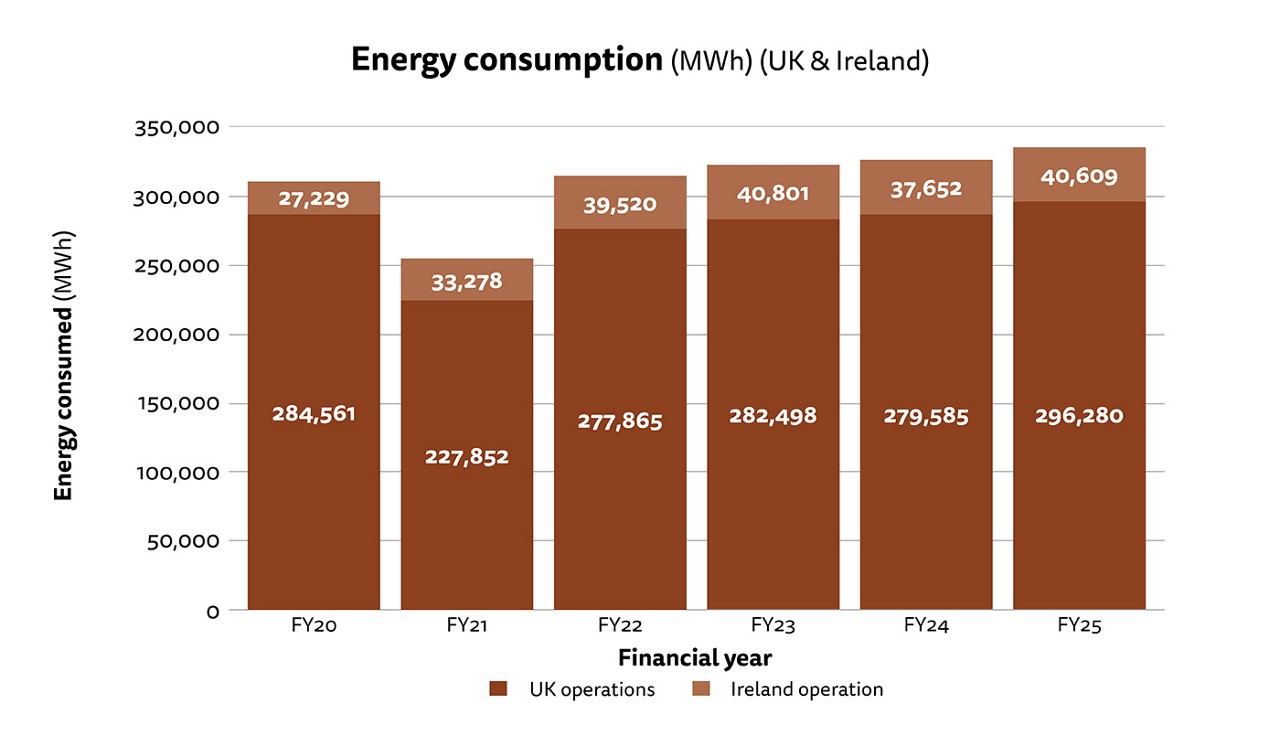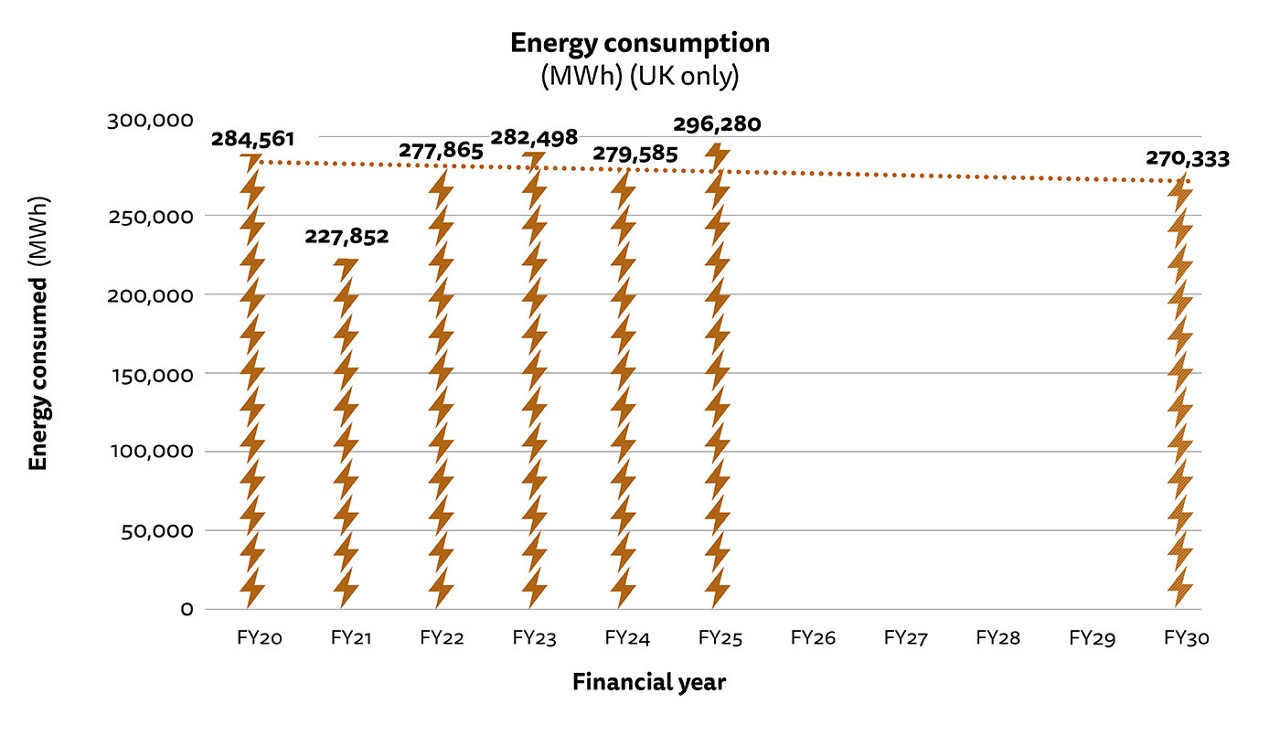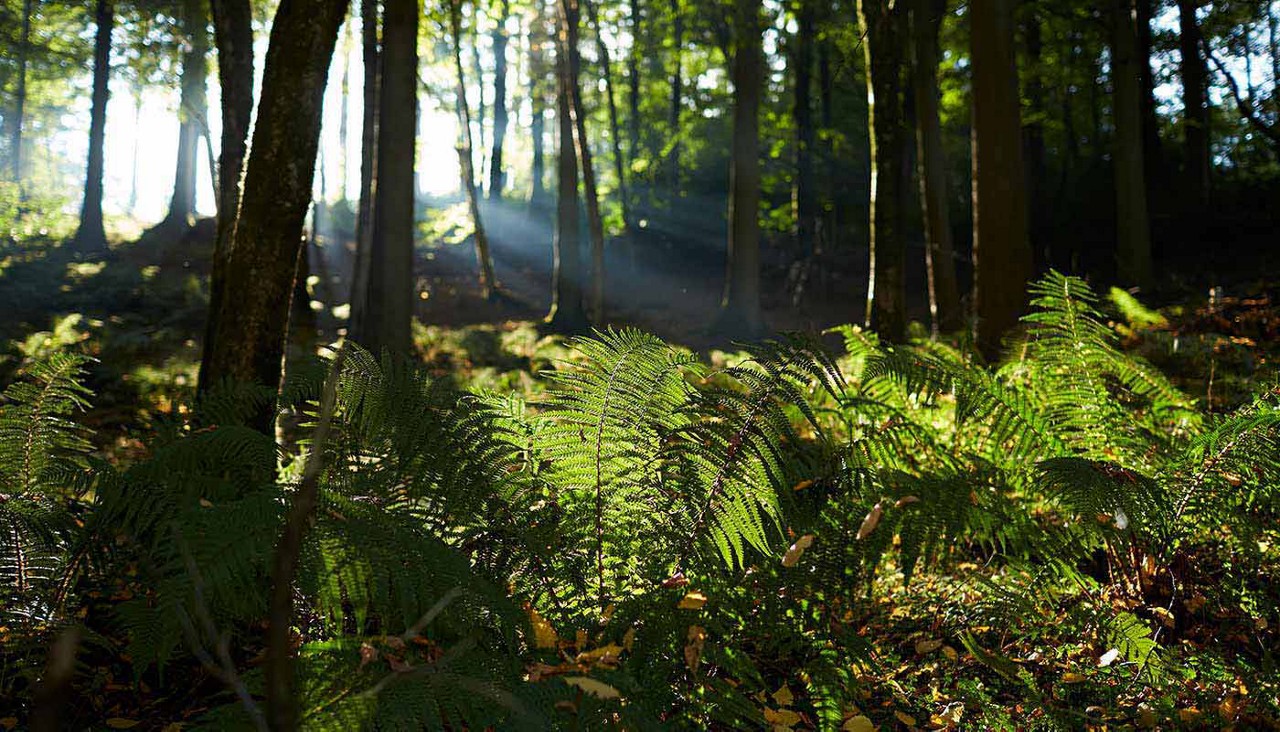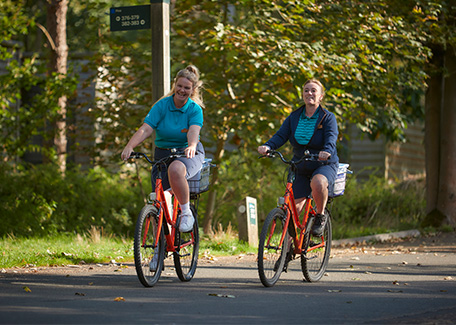Over the next decade, we’ll reduce our energy consumption whilst also looking to introduce more renewable sources of energy. We’ll focus on using energy-efficient equipment and empowering our colleagues to make long-term behavioural changes in terms of their energy use.
Our target is phased, with the aim of reducing our energy consumption by 2% in the first year of our strategy, 3% in the second year, and sustaining a 5% decrease over 10 years. Much has been done in recent years to reduce energy use, and our work is now focused on making the small, incremental changes which contribute to the wider strategy.
Where we are
- All the lamps in our lodges have had the incandescent light bulbs replaced with low-energy LEDs
- We’ve replaced the grilling equipment in our restaurant kitchens with energy-efficient alternatives – the new equipment uses 60% less energy
- We’ve replaced the refrigeration equipment in our ParcMarkets with energy-efficient alternatives
How we're doing
We’re aiming to reduce our energy use by 5% by 2030.
We’re aiming for a sustained decrease, achieved through a series of incremental changes, including an internal scheme encouraging colleagues to make small changes to contribute to the bigger picture.
Figure 1 shows the total energy consumption across our UK and Ireland operations. In FY25, this figure rose above the 2020 baseline for the first time for our UK operations. In Ireland, the figure was the second highest since 2020 and has been above the baseline since FY21. This will be a key focus for us in the coming year.
 Figure 1: Stacked bar chart showing total energy consumption in MWh for our UK and Ireland operations
Figure 1: Stacked bar chart showing total energy consumption in MWh for our UK and Ireland operations
Figure 2 shows the total energy consumed across our UK operations and monitors our progress against our 2030 targets. To date, we’ve actually increased our energy consumption by 4% since 2020. This remains a key focus for us.
 Figure 2: Bar chart showing total energy consumption in MWh for our UK operations
Figure 2: Bar chart showing total energy consumption in MWh for our UK operations
- Figures for FY20, FY21 and FY22 were affected by closures of the villages and operational restrictions due to the Covid-19 pandemic and therefore do not reflect a typical year of operations.
- Figures for FY20 have been adjusted to account for 35 days of closure due to the Covid-19 pandemic – this adjustment allows us to reasonably set FY20 as a baseline year for our targets, ensuring we reflect a typical operating year.
- Due to the timing of when Center Parcs Longford Forest (in Ireland) opened, and the closures due to the Covid-19 pandemic, FY24 was the first full year of figures for our Ireland operation. With this in mind, we have not yet set targets for our Ireland operation and so our energy consumption target solely applies to our UK operations at this time. We are committed to making real reductions to our energy consumption and we hope to be able to set targets for our Ireland operation soon.
- FY20: 284,561 MWh
- FY21: 227,852 MWh
- FY22: 277,865 MWh
- FY23: 282,498 MWh
- FY24: 279,585 MWh
- FY25: 296,280 MWh
- FY20: 27,229 MWh
- FY21: 33,278 MWh
- FY22: 39,520 MWh
- FY23: 40,801 MWh
- FY24: 37,652 MWh
- FY25: 40,609 MWh
The chart shows the amount of energy used in our UK and Ireland operations in MWh. There is a dip at FY21 (due to operational restrictions and closures during the pandemic). For our UK operations, the figure remains just below our baseline until FY25, when it increases to above the baseline. For our Ireland operations, the figure remains above our baseline. Although it decreased from FY23 to FY24, the figure increased to close to the FY23 total in FY25.
- FY20: 284,561 MWh
- FY21: 227,852 MWh
- FY22: 277,865 MWh
- FY23: 282,498 MWh
- FY24: 279,585 MWh
- FY25: 296,280 MWh
- FY30 target: 270,333 MWh
The chart shows the amount of energy used in our UK operations in MWh. There is a trend line from FY20 to FY30 showing that a 14,228 MWh reduction is required to meet our FY30 target. There is a dip at FY21 (due to the effect of the pandemic) before returning to just below the baseline in FY22. The figures remained below the baseline until FY25, when they increased to above the baseline and the required rate of reduction.



